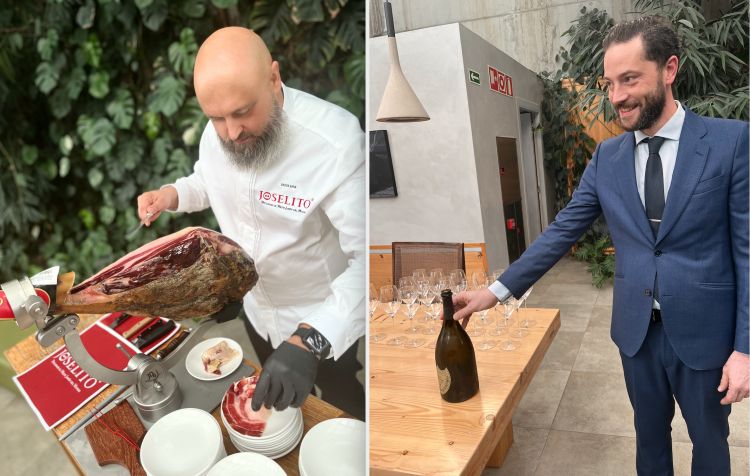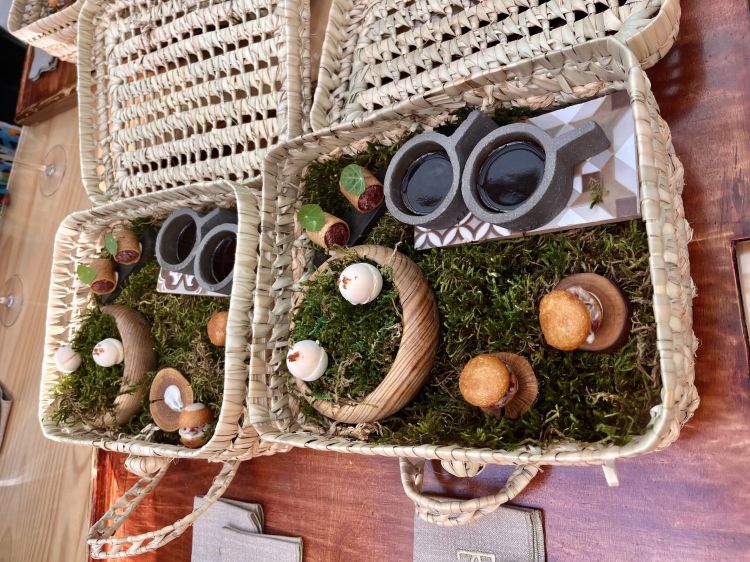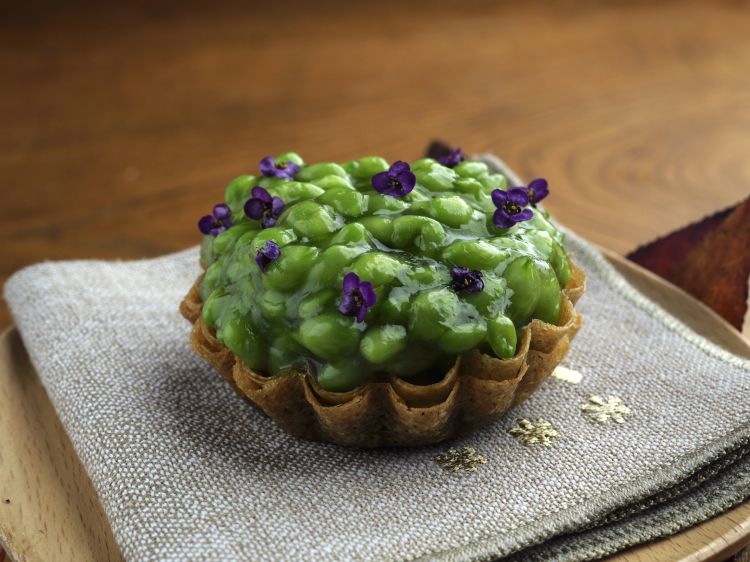The smoke of the pandemic clears and the magnificent Joselito Lab returns. It’s the yearly appointment with which the centuries-old Spanish company from Guijuelo entrusts what has been declared el mejor jamón del mundo to the hands of an extraordinary chef. It all began in 2013 with Ferran Adrià, an early admirer. In 2014 we had the good fortune to enjoy the lab at Le Calandre in Padua (read on). ‘Why don't we cook charcuterie in addition to jamon? Alajmo asked me,' Jose Gomez junior recalls today. 'The following year Jonnie Boer of De Librije added pork again...'. A progressive open-minded exploration of the macrocosm of pork in fine dining that gradually involved Seiji Yamamoto (Ryugin, Tokyo), Joachim Wissler (Vendome, Germany), Yannick Alleno (Pavillon Ledoyen, Paris).
‘In the year of the pandemic,’ finishes Jose junior, the sixth generation of the company together with his younger brother Francisco, ‘we changed the concept, involving for the first time a chef with less than 3 Michelin stars. But what a chef: Bittor Arginzoniz, the elusive and acclaimed master of fire from Etxebarri, a few kilometres from where we write. 'He still has the best product in the world, so we felt it was consistent'. Last Thursday, the last stop of the Joselitolab touched down in the court of Eneko Atxa, a chef who has been boasting three stars for exactly a decade at Azurmendi in Larrabetzu, a few kilometres in the countryside around Bilbao. ‘We wanted to shift the focus to sustainability, a very important concept for us, and Eneko is the right person. He is Basque, but only by birth; he is actually Japanese. Very solid, he is obsessed with making things perfect. And sustainable in every way'.
‘How could I say no,’ replied the chef of Amorebieta, a total of 5 Michelin stars with Eneko's, at Azurmendi, and the one in Lisbon, ‘my relationship with the Lopez family dates back to 2005. I did it out of friendship, I didn't ask for money. They are number one in the world also for the humility they show. They are muy amables'.

Joselito's cortador Ernesto Soriano and Matteo Manzini, restaurant manager at Azurmendi
Azurmendi's menu was another fine example of cooking pork. Not just the award-winning
jamon, charcuterie and meat. This time, vegetables, flowers, wild herbs, honey and everything else on which the pampered pigs feed (it is said that each pig has 3 hectares to graze on) from the
dehesa of
Joselito, the typical woodland of the estate between Extramedura and Castilla y Leon, also came into play. The succulence and sweetness of the
jamon comes from here, from the lifestyle of the
cerdo and above all from what they eat every day: 7 kg of acorns and 3 kg of herbs, according to the Gomez family's official statements.
Pork and the vegetable world, then. The devil and holy water but only in the minds of those who think by opposites. And where else but in the restaurant that drags its customers into the vegetable garden right from the start, that illustrates (long ago, not today) the virtues of solar panels, of self-sufficient geothermal systems, of converting rainwater into irrigation water? ‘We are working with Harvard,’ Eneko Atxa revealed, ‘on a project that monitors the regenerative sustainability of plants and living things. Every living being and plant species does not just receive. Everyone gives. And it is on this that we should focus all our efforts'. Which are the basis of all creative possibilities, present and future.
JOSELITO LAB, AZURMENDI MENU, 17th NOVEMBER 2022

The composition of the Picnik, the initial part of the menu. It included jamon ice cream, Iberico tartare, cup brioche, red bean and pork reduction

Second step: la Mesa del Cerdo ('the pork table'): Truffle egg, fat essence and cheek; Iberico meringue (fat essence and bacon), Joselito Vermouth

Third round of tastings, La serra - Dehesa: Txuleta Joselito with grilled fat. It appeared next to two other tastings: Crispy bellota and green asparagus, apple and fermented herbs from Dehesa and Cerdito, spheres of Iberian jamon mousse

Detail of the succulent Txuleta Joselito (chop), cooked on the bone with charcoal fat

Hojas, 'leaves', prelude to the cycle of actual dishes on the menu

Txipi pelayo, Pelayo-style squid with Joselito fat essence

Marennes-Olèron oyster cooked in tempura in ham essence and jamon zabaglione

Frozen Dehesa: Sweet and sour vegetables, tomato granita and dehydrated flowers

Lagrima peas and Iberico gel, an exceptional bite. Not in the photo, some chickpea juice

Lobster, with pepper and smoked chorizo sauce, coral emulsion and sweet and sour grapes

With lobster, the pairing of His Majesty Vega Sicilia 1999

Parpatana (pre-cured) bluefin tuna cooked in low temperature and toffée

Bizkaina Joselito, vizcaina sauce, i.e. a black onion cooked for 4 days in ham, with Barranca pepper. A very creamy texture

Castañetas de cerdo, Pork sweetbreads, Joselito duxelles and truffles

Pork curds and honey from Dehesa

José Gomez junior and Eneko Atxa
Translated into English by Slawka G. Scarso